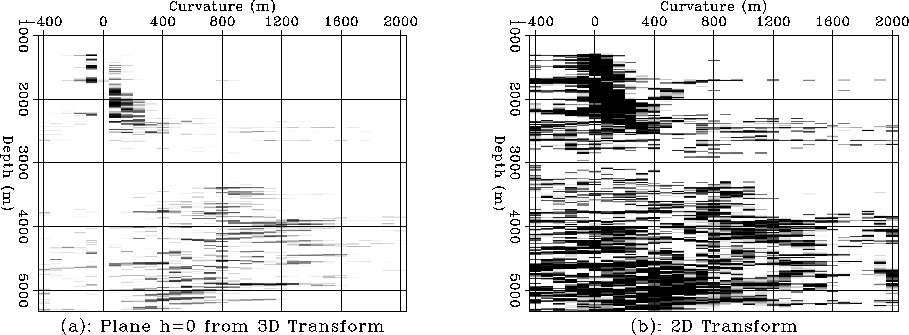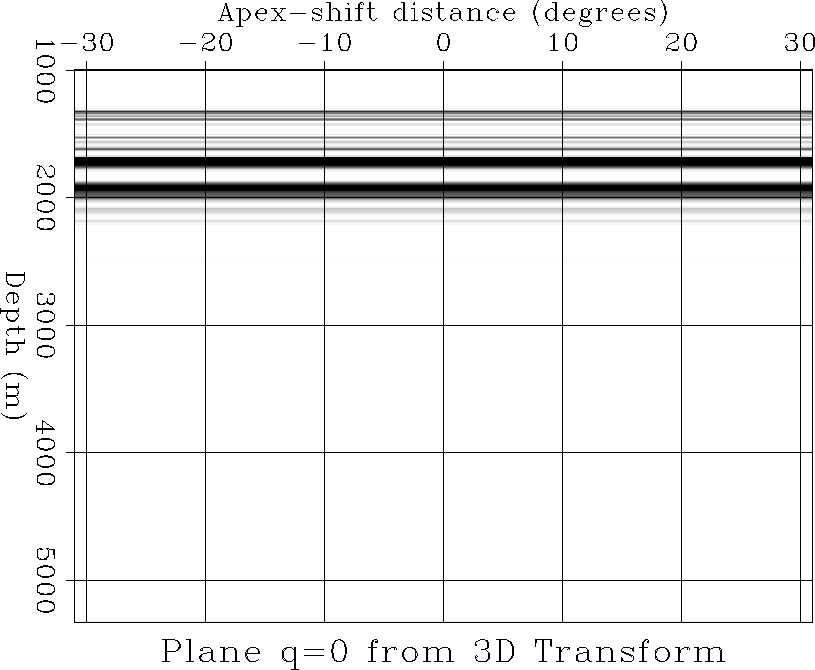 |
Figure 3 Radon transforms of the ADCIG in Figure 2b. (a): 2D transform. (b): h=0 plane of the apex-shifted 3D transform.
Figure 3a shows the h=0 plane from the 3D volume. This plane corresponds to the zero apex-shift and is therefore similar to the standard 2D Radon transform. Primaries are mapped near the q=0 line and specularly-reflected multiples are mapped to other q values. Diffracted multiples, since their moveout apex is not zero, are not mapped to this plane and so do not obscure the mapping of the specularly-reflected multiples. For comparison, Figure 3b shows the 2D Radon transform, plotted at the same clip value as Figure 3a. Notice how the diffracted-multiple energy is mapped as background noise, especially at the largest positive and negative q values. Notice also that the primary energy is higher than in Figure 3a since with the 3D transform the primary energy is mapped not only to the h=0 plane but to other h planes as well. This is further illustrated on Figure 4 which shows the zero-curvature (q=0) plane for the same ADCIG. The nearly flat primaries have zero curvature for all values of the apex-shift distance h, so in this plane they appear as horizontal lines. Neither the specularly-reflected nor the diffracted multiples map to this plane.
 |
|
env_qplane
Figure 4 Zero curvature plane from 3D Radon transform of ADCIG in Figure 2b. Flat primaries are mapped to the zero curvature line for all h values. |  |